
Resources 
The following is a growing library of reference material including book reviews and articles that I am offering to my followers. If you would like to share a book review of your own or an article that you feel would compliment what this website offers, CONTACT ME.
![]()
September 2024
Ivermectin as an Anti-Cancer Drug
Ivermectin, a potential anticancer drug derived from an antiparasitic drug
The following is taken from PubMed [PMID: 32971268]
Ivermectin has powerful antitumor effects, including the inhibition of proliferation, metastasis, and angiogenic activity, in a variety of cancer cells. This may be related to the regulation of multiple signaling pathways by ivermectin through PAK1 kinase. On the other hand, ivermectin promotes programmed cancer cell death, including apoptosis, autophagy and pyroptosis. Ivermectin induces apoptosis and autophagy is mutually regulated. Interestingly, ivermectin can also inhibit tumor stem cells and reverse multidrug resistance and exerts the optimal effect when used in combination with other chemotherapy drugs.
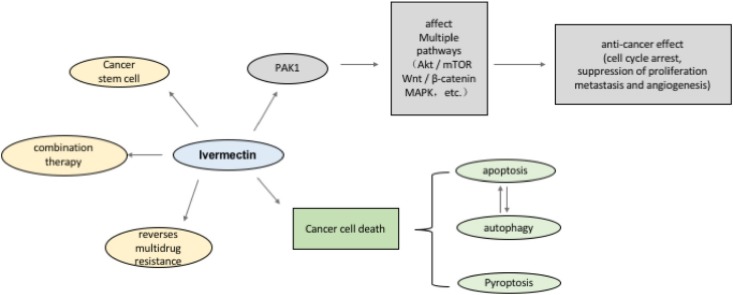
Abstract
Ivermectin is a macrolide antiparasitic drug with a 16-membered ring that is widely used for the treatment of many parasitic diseases such as river blindness, elephantiasis and scabies. Satoshi ōmura and William C. Campbell won the 2015 Nobel Prize in Physiology or Medicine for the discovery of the excellent efficacy of ivermectin against parasitic diseases. Recently, ivermectin has been reported to inhibit the proliferation of several tumor cells by regulating multiple signaling pathways. This suggests that ivermectin may be an anticancer drug with great potential. Here, we reviewed the related mechanisms by which ivermectin inhibited the development of different cancers and promoted programmed cell death and discussed the prospects for the clinical application of ivermectin as an anticancer drug for neoplasm therapy.
CLICK HERE for the full article.
The WAR on Ivermectin
The medicine that saved millions and could have ended the pandemic
By Dr. Pierre Kory
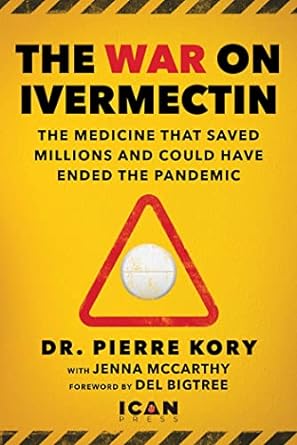 “In The War on Ivermectin, Dr. Kory powerfully documents the deep-seated corruption and relentless propaganda that led to the greatest humanitarian catastrophe in history. In deftly exposing the systemic corruption in our medical systems and media, he has solidified his place among COVID pandemic heroes.” — Aseem Malhotra, MBChB, cardiologist and author of the 21-Day immunity Plan
“In The War on Ivermectin, Dr. Kory powerfully documents the deep-seated corruption and relentless propaganda that led to the greatest humanitarian catastrophe in history. In deftly exposing the systemic corruption in our medical systems and media, he has solidified his place among COVID pandemic heroes.” — Aseem Malhotra, MBChB, cardiologist and author of the 21-Day immunity Plan
“The War on Ivermectin is an exceptional contribution to the literature that has emerged from the COVID-19 pandemic. This book will deepen your understanding of the fraudulent practices associated with discrediting Ivermectin and why it is essential to have access to this safe and effective therapy for potential future infections.” — Dr. Joseph Mercola, founder of mercola.com
I personally used Ivermectin along with my family and a close group of friends during the COVID-19 era. It was highly effective and it was not easy to obtain. Today, I am using Ivermectin as one of my cancer prevention protocols.
Here is what the publisher has to say about this book:
Big Pharma and health agencies cry, “Don’t take ivermectin!” A media storm follows. Why then, does the science say the opposite?”
Ivermectin is a dirty word in the media. It doesn’t work. It’s a deadly horse dewormer. Prescribe or promote it and you’ll be called a right-wing quack, be banned from social media, or lose your license to practice medicine. And yet, entire countries wiped out the virus with it, and more than ninety-five studies now show it to be unequivocally effective in preventing and treating Covid-19. If it didn’t work, why was there a coordinated global campaign to cancel it? What’s the truth about this decades-old, Nobel Prize-winning medication?
The War on Ivermectin is the personal and professional narrative of Dr. Pierre Kory and his crusade to recommend a safe, inexpensive, generic medicine as the key to ending the pandemic.
Written with Jenna McCarthy, Dr. Kory’s story chronicles the personal attacks, professional setbacks, and nefarious efforts of the world’s major health agencies and medical journals to dismiss and deny ivermectin’s efficacy. Part personal narrative, part scathing expose, The War on Ivermectin highlights the catastrophic impacts of the mass media censorship and relentless propaganda that led to the greatest humanitarian crisis in history.
Although numerous studies and epidemiologic data have shown that millions of lives were saved globally with the systematic use of ivermectin, many more millions perished. This carnage was the direct result of what Dr. Kory eventually discovered to be the pharmaceutical industry’s silent but deadly war on generic medicines and the corrupt, captured medical and media systems that allow it to continue. For anyone who thought Covid-19 was the enemy, Dr. Kory’s book will leave no doubt that the true adversary in this war is a collective cabal of power-hungry elites who put profits over people and will stop at nothing in their quest for control.
The War on Ivermectin is published through ICAN PRESS, an imprint of Skyhorse Publishing. ICAN (Informed Consent Action Network) is a nonprofit organization investigating the safety of medical procedures, pharmaceutical drugs, and vaccines while advocating for people’s right to informed consent.
To view publisher’s book overview and other book reviews or to order – go to: www.amazon.ca or www.amazon.com
Pain After Spinal Cord Injury
Pain After Spinal Cord Injury: Why it Happens & How to Relieve It
Last updated on March 26, 2021
Pain after spinal cord injury is common, affecting up to 80% of SCI patients. Normally, sensations travel from the body, through the spinal cord, and to the brain for processing. However, a spinal cord injury can disrupt the flow of messages between the brain and body, which can cause the brain to misinterpret these messages as pain. Pain can also be the result of secondary complications of SCI, such as shoulder pain from wheelchair use or bladder problems.

This article will go over 3 types of pain that can occur after spinal cord injury and effective ways to manage them.
CLICK HERE to view the full article.
Life After a Spinal Cord Injury
What do I need to know about my physical disability?
By the Canadian Paraplegic Association
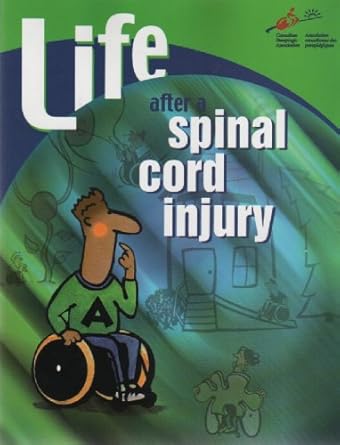 ⭐⭐⭐⭐ This book was given to me when I was in the hospital just after my surgery, after being told that I would never walk again. I received a visit from a wonderful gentleman from Spinal Cord Injury Ontario who gave me a copy of this book. It took a while for me to pick it up, but when I did, I could not put it down. It answered all my questions as to what was going on in my body.
⭐⭐⭐⭐ This book was given to me when I was in the hospital just after my surgery, after being told that I would never walk again. I received a visit from a wonderful gentleman from Spinal Cord Injury Ontario who gave me a copy of this book. It took a while for me to pick it up, but when I did, I could not put it down. It answered all my questions as to what was going on in my body.
The publishers of this book did not spare on any of the questions and topics that a person with a spinal cord injury or any kind of illness or disease that rendered them in a wheelchair facing a life-long disability.
This book offers the readers independence. It helps then come to terms with their disability and how to manage on their own. A great amount of the book is spent covering bladder and bowel issues which from my own personal experience is one of the toughest things to come to terms with and to deal with.
The book covers not only life-skills as well as dating, sexuality and pregnancy. It outlines the mental and emotional stages of overcoming a disability and how to deal with depression, anxiety, re-establishing oneself with family, friends and community.
No stone unturned. Great resource.
How To Follow An Anti-Cancer Diet
After being diagnosed with stage 3 colon cancer, Chris strictly followed an anti-cancer diet and shares his tips on how to follow a diet of natural cancer fighting foods, an essential diet for cancer patients. http:// www.chrisbeatcancer.com
Kendra asks, "I am 30 years old with 3 children and I was diagnosed with colon cancer in March of this year. I haven't done any chemo. I was supposed to be on the diet that you did but I let the temptations of all the foods I used to eat get to me and I gave in. So of course the cancer has spread. It's so hard to completely change eating habits especially when one loves food as much as I do. What do you eat on your salads if anything? Is it okay to eat something I enjoy every now and then?"
Source: www.chrisbeatcancer.com
Back Exercise
Back Exercise: Stabilize, Mobilize, and Reduce Pain
By Brian Richey
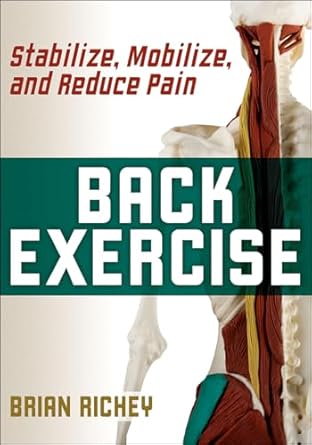 ⭐⭐⭐⭐This book was introduced to me by a PSA while I was at Providence Spinal Cord Rehabilitation. He was a very physically active person and had experienced a number of injuries over the years that had caused stress to his back. He found this book in the Providence lending library and shared it with me since I was determined to overcome my own injuries to my back and legs.
⭐⭐⭐⭐This book was introduced to me by a PSA while I was at Providence Spinal Cord Rehabilitation. He was a very physically active person and had experienced a number of injuries over the years that had caused stress to his back. He found this book in the Providence lending library and shared it with me since I was determined to overcome my own injuries to my back and legs.
I highly recommend this book for anyone looking for a great book with the most excellent photographs and how to’s for each of the exercises. The author gives in-depth descriptions of various types of injuries and the best exercises for those injuries.
The following is the book publishers summary of this book:
Most people will experience back pain at some point in their lives, but only a few have the resolve to seek answers and find relief. Back Exercise: Stabilize, Mobilize, and Reduce Pain explores the anatomy and movement of the spine and offers exercises that will help you move—and feel—better.
Back Exercise goes beyond exercise and rehabilitation to help you understand the why behind spinal conditions and back pain. Throughout the book, unique clay models of the spine reveal each layer of the spinal anatomy, from the spinal vertebrae and discs to the muscle and tissue. These engaging full-color photos make it easy to visualize the structure and biomechanics of the spine and uncover the sources of your pain.
You’ll then be guided through an evaluation of your current back health with a self-assessment. Using only the floor, a wall, and a camera, you can check your pain response to several simple exercises and identify postural deviations and muscular imbalances in your body.
Once you’ve assessed your back mobility, the book features 60 exercises—complete with instructions and safety tips—that help stabilize, strengthen, and rehabilitate the spine. Create foundational stability for your spine, extend your range of motion, and relieve pain with exercises that build strength, mobility, and flexibility in your back.
Finally, Back Exercise explores five common spinal conditions: nonspecific low back pain, disc bulge and herniation, spondylolisthesis, stenosis, and spinal surgeries such as spinal fusion. Six months’ worth of tailored exercise plans are presented for each condition, offering a safe progression of exercises to improve mobility, increase stability, and reduce pain.
No one wants to live with back pain or discomfort. With Back Exercise you will understand the sources of your pain and take control of your back health for the long term.
To view publisher’s book overview and other book reviews or to order – go to: www.amazon.ca or www.amazon.com
Spasticity Stretching Exercises
Stretch in your home easily even alone for physical rehabilitation after stroke hemiparesis brain or spinal cord injury
By Leon Edwards
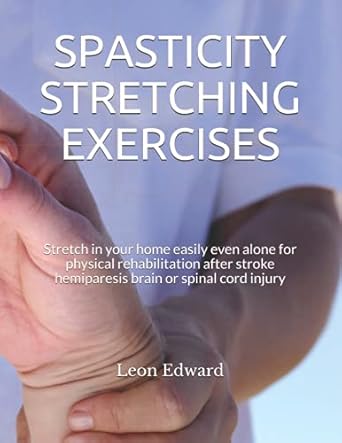 Leon Edwards offers a compilation of stretching exercises for spasticity, many in which can be done easily and without the use of a partner at home. This simple guide of techniques to decrease spasticity was prepared working with an occupational therapist, using these techniques for spasticity, drastic improvement in relief would increase movement was seen and I needed to make these easily available for anyone to easily stretch and feel the benefits in your own home.
Leon Edwards offers a compilation of stretching exercises for spasticity, many in which can be done easily and without the use of a partner at home. This simple guide of techniques to decrease spasticity was prepared working with an occupational therapist, using these techniques for spasticity, drastic improvement in relief would increase movement was seen and I needed to make these easily available for anyone to easily stretch and feel the benefits in your own home.
Many people with spasticity don’t have partners to work with or cannot get to a therapist for sessions often enough, for whatever reason. The stretches and spasticity exercises in this guide can be done daily and easily in the home. This guide is ideal for anyone needing to manage their spasticity, or are receiving home care after a stroke or a traumatic brain injury. This book can also be used as a guide for stretches to relieve effects of hemiparesis, hemiplegia, SCI or spinal cord injury effects , even cerebral palsy, MS effects.
To view publisher’s book overview and other book reviews or to order – go to: www.amazon.ca or www.amazon.com
PEMF Studies on Spinal Cord Injury and Bone Marrow Stem Cells
Enhanced effect of combining bone marrow mesenchymal stem cells (BMMSCs) and pulsed electromagnetic fields (PEMF) to promote recovery after spinal cord injury in mice
Source: PubMed [PMID: 35949547]
Abstract
Spinal cord injury (SCI) is a destructive traumatic disease of the central nervous system without satisfying therapy efficiency. Bone marrow mesenchymal stem cells (BMMSCs) therapy promotes the neurotrophic factors’ secretion and axonal regeneration, thereby promoting recovery of SCI. Pulsed electromagnetic fields (PEMF) therapy has been proven to promote neural growth and regeneration. Both BMMSCs and PEMF have shown curative effects for SCI; PEMF can further promote stem cell differentiation. Thus, we explored the combined effects of BMMSCs and PEMF and the potential interaction between these two therapies in SCI. Compared with the SCI control, BMMSCs, and PEMF groups, the combinational therapy displayed the best therapeutic effect. Combinational therapy increased the expression levels of nutritional factors including brain‐derived neurotrophic factor (BDNF), nerve growth factors (NGF) and vascular endothelial growth factor (VEGF), enhanced neuron preservation (NeuN and NF‐200), and increased axonal growth (MBP and myelin sheath). Additionally, PEMF promoted the expression levels of BDNF and VEGF in BMMSCs via Wnt/β‐catenin signaling pathway. In summary, the combined therapy of BMMSCs and PEMF displayed a more satisfactory effect than BMMSCs and PEMF therapy alone, indicating a promising application of combined therapy for the therapy of SCI.
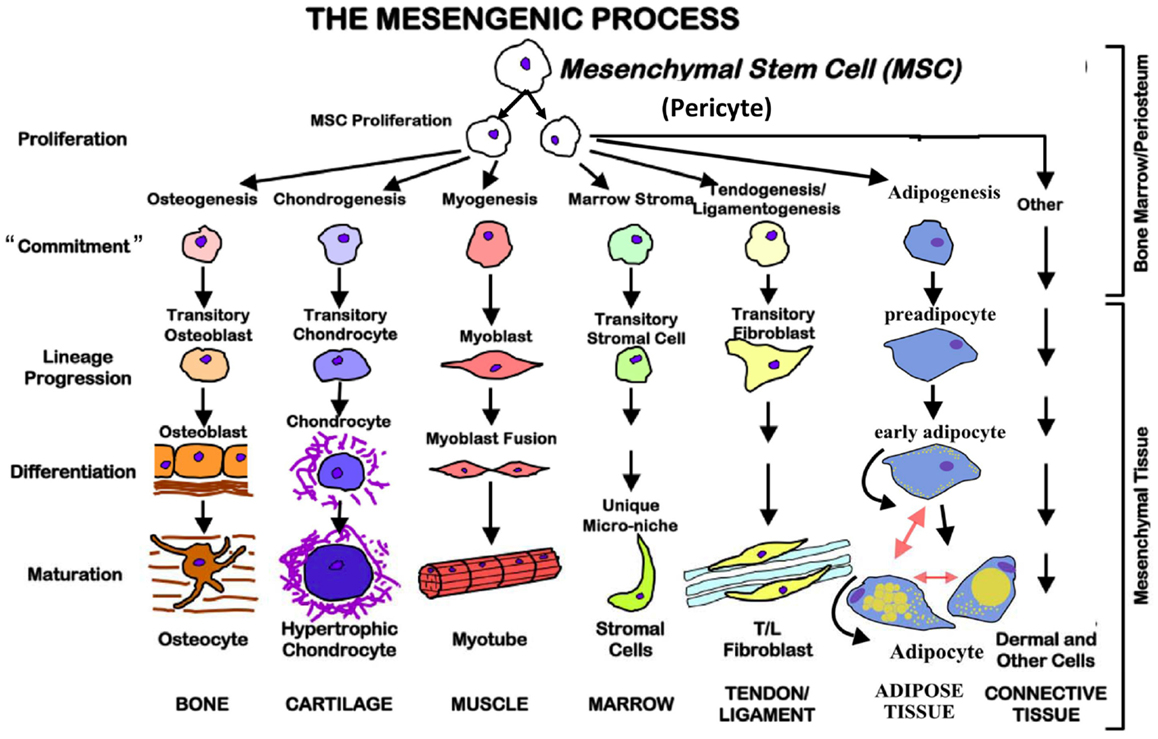
The combination of bone marrow mesenchymal stem cells (BMMSCs) and pulsed electromagnetic fields (PEMF) improved the functional recovery in SCI mice by decreasing glial scar area, promoting the expression levels of nutritional factors, enhancing neuron preservation and axonal regeneration, which may be achieved by modulating Wnt/β‐catenin signaling pathway.
CLICK HERE to see full article
Exercises for Spinal Cord
A Beginner-Friendly Guide to Exercises That Will Promote and Help Maintain the Health of Your Spinal Cord Irrespective Of Your Age Kindle Edition
by Glayds Jones
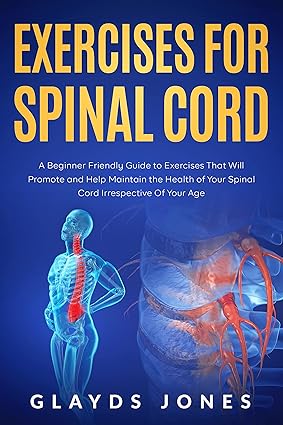 Glayds Jones offers a great user friendly Guide to Exercises That Will Promote and Help Maintain the Health of Your Spinal Cord Irrespective Of Your Age!
Glayds Jones offers a great user friendly Guide to Exercises That Will Promote and Help Maintain the Health of Your Spinal Cord Irrespective Of Your Age!
We all know it; we have to protect our spinal cord with everything we’ve got because injury of whatever nature to the spine could have lifelong problems or even result to premature death (it has been said to increase the risk of dying prematurely by 2-5 times!).
Whether you’ve sustained an injury to the spine or simply want to make sure the spine is in top shape, exercises that target the spine can help a lot.
This book aims to provide you with scientifically-proven information on the unique physiologic effects of spinal cord injuries (SCI) along with the potential role of aerobic exercises in addressing and mitigating these effects. Actually, exercise training has been proven to be an effective therapy for SCI as it improves your spinal cord function by compensating, enhancing and replacing the remaining function of your spinal cord nerves and muscles.
This book also provides a guide to the best nutrients that your spinal cord needs and well researched exercise tips to follow if you have a spinal cord injury. This book will help you strengthen your spinal cord without trying too hard.
To view publisher’s book overview and other book reviews or to order – go to: www.amazon.ca or www.amazon.com
How Not to Die Cookbook
100+ Recipes to Help Prevent and Reverse Disease
by Michael Greger, M.D., FACLM
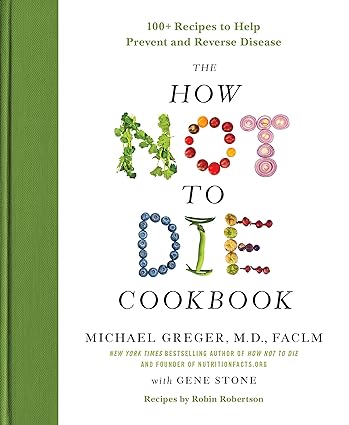 ⭐⭐⭐⭐Dr. Greger presents a beautifully-designed, comprehensive cookbook complete with more than 120 recipes for delicious, life-saving, plant-based meals, snacks, and beverages that's a perfect gift for healthy conscious eaters.
⭐⭐⭐⭐Dr. Greger presents a beautifully-designed, comprehensive cookbook complete with more than 120 recipes for delicious, life-saving, plant-based meals, snacks, and beverages that's a perfect gift for healthy conscious eaters.
Rooted in the latest nutritional science that Greger presented in his book “How Not to Die,”these easy-to-follow recipes with complimentary photographed recipes make this book very appealing to followers of Dr. Greger’s work.
As someone who is not into cooking, following recipes, cooking shows, etc., I found this book very appealing; easy to search and decipher which recipes best fit my personal diet routine. For someone who is no longer able to cook for myself, this book offers me the opportunity to share this book with my family
To view publisher’s book overview and other book reviews or to order – go to: www.amazon.ca or www.amazon.com
How Not to Die
Discover the Foods Scientifically Proven to Prevent and Reverse Disease
by Michael Greger, M.D., FACLM
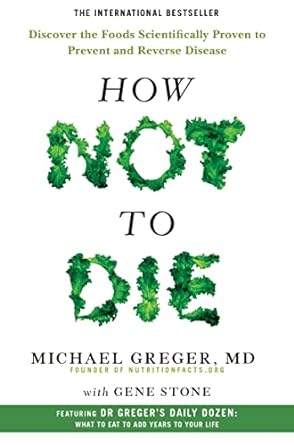 ⭐⭐⭐⭐Dr. Michael Greger presents how simple plan-based food choices help us liver healthier lives. He describes which foods to eat to prevent may of the leading causes of disease-related deaths. He shows how diets based on vegetables, fruits, whole grains, legumes and tubers may save lives.
⭐⭐⭐⭐Dr. Michael Greger presents how simple plan-based food choices help us liver healthier lives. He describes which foods to eat to prevent may of the leading causes of disease-related deaths. He shows how diets based on vegetables, fruits, whole grains, legumes and tubers may save lives.
Greger provides references to many of the latest scientific studies on how to fight disease. His obvious goal throughout the book is to prove that providing the right nutrition to the body will prevent disease.
In addition to showing what to eat and what not to eat, Greger provides a list of the top fifteen causes of death. Gregor provides a checklist of the twelve foods we should consume every day to combat diseases. The book is full of practical, actionable advice and nutritional science.
I personally found good references for combating cancer and thus I am able to create my own list of foods to eat and not to eat. Gregor also provides a lot of information on supplements and how they can compliment one’s diet or interfere with food absorption or how the body uses nutrients from both.
To view publisher’s book overview and other book reviews or to order – go to: www.amazon.ca or www.amazon.com
The Alkaline Life
New Science to Rebalance Your Body, Reverse Aging, and Prevent Disease
by Ross Bridgeford
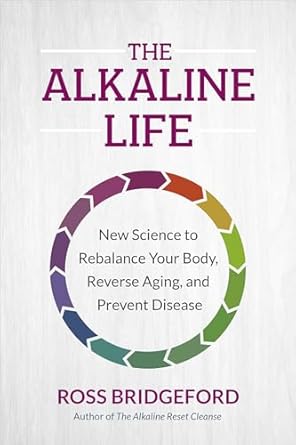 The Alkaline Life, is a compliments all of the other books that I have reviewed that go extensively into the importance of diet to balancing, combating and curing many illnesses and diseases including cancer.
The Alkaline Life, is a compliments all of the other books that I have reviewed that go extensively into the importance of diet to balancing, combating and curing many illnesses and diseases including cancer.
In this book, the author discuses the differences between alkaline and acid diets and describes clearing the difference food choices and how they affect our bodies. All of this relating to lifestyle changes, which again, is what all of these books promote. The last chapters in this book give good references for ideal foods, diets, daily menu plans and shopping lists.
The author outlines the basic principles for living a long-term alkaline lifestyle and targeting specific health issues such as chronic fatigue, cardiovascular disease, type 2 diabetes, autoimmune conditions, thyroid healing, and immunity building recommendations.
For me, the most powerful chapter is the one on “Addressing Cancer” where he states: “The role of acidity in cancer risk is significant, and addressing this can bring huge hope. …What I want to do over the next few pages is give you the big-picture role of diet-induced acidosis in cancer risk and the confidence to know that by following the Alkaline Life Plan, you can greatly reduce it.
For me, personally, this book made me really get serious about my lifestyle, food, diet and my own battle against cancer.
To view publisher’s book overview and other book reviews or to order – go to: www.amazon.ca or www.amazon.com